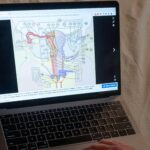Table of Contents
Introduction
Michel Aplasia is a rare congenital condition that significantly impacts limb development, particularly the upper limbs. This condition can result in partial or complete absence of one or both arms, posing challenges in mobility and daily activities. Understanding Michel Aplasia is crucial for affected individuals and their families. In this article, we will explore seven essential insights into Michel Aplasia, covering its causes, symptoms, diagnosis, treatment options, and living with the condition.

What is Michel Aplasia?
Michel Aplasia is a congenital malformation characterized by the absence of limb structures. This condition can manifest in various degrees, ranging from minor limb malformations to the complete absence of limbs. It primarily affects the upper limbs, which can lead to difficulties in performing routine tasks.
Causes and Risk Factors
While the precise cause of Michel Aplasia remains largely unknown, it is believed to result from a combination of genetic and environmental factors during pregnancy. Key risk factors include:
- Genetic Mutations: Abnormalities in specific genes may play a role in limb development.
- Maternal Health: Conditions such as diabetes or exposure to certain medications or toxins during pregnancy may increase the risk of congenital abnormalities.
- Family History: A family history of congenital limb malformations can also be a significant risk factor.

Symptoms of Michel Aplasia
The symptoms of Michel Aplasia can vary widely among individuals. Common manifestations include:
- Limb Absence: Partial or complete absence of one or both upper limbs.
- Structural Abnormalities: Malformations of the remaining limb structures, such as shortened or deformed arms.
- Associated Conditions: Some individuals may have additional syndromes or health issues that accompany Michel Aplasia, affecting other body systems.
Diagnosis of Michel Aplasia
Diagnosing Michel Aplasia typically involves several steps:
- Physical Examination: A thorough assessment by a healthcare provider can identify visible limb abnormalities.
- Imaging Tests: X-rays or MRI scans may be utilized to evaluate the extent of limb malformation and to rule out other conditions.
- Genetic Testing: In some cases, genetic testing may be recommended to identify any underlying genetic factors.

Treatment
Currently, there is no cure for Michel Aplasia, but several treatment options can help improve the quality of life for those affected:
- Physical Therapy: Tailored physical therapy can enhance muscle strength and mobility, enabling individuals to perform daily activities more effectively.
- Surgical Interventions: Surgical options may be available to correct limb deformities or improve functionality. This could include reconstructive surgeries or amputations followed by prosthetic fitting.
- Prosthetics: Custom prosthetic devices can significantly enhance independence, allowing individuals to engage in activities they enjoy and manage daily tasks.
Living with Michel Aplasia
Living with Michel Aplasia presents unique challenges, but many individuals lead fulfilling lives with the right support. Key strategies for coping include:
- Support Networks: Engaging with support groups can provide emotional and practical support. Connecting with others who understand the challenges can be incredibly beneficial.
- Adaptive Technologies: Utilizing assistive devices and adaptive tools can greatly enhance independence. Innovations in technology continue to improve the quality of life for individuals with limb differences.

Awareness and Advocacy
Raising awareness about Michel Aplasia is crucial for improving diagnosis and treatment. Advocacy groups work to educate healthcare providers and the public, helping to ensure better outcomes for affected individuals. Increased awareness can lead to earlier diagnosis, access to resources, and support for families.
Conclusion
Michel Aplasia, though rare, is a condition that profoundly impacts the lives of those affected. By understanding its causes, symptoms, and treatment options, we can better support individuals and families navigating this journey. If you need more information or help with your health journey, feel free to contact us at Health Authentica.










